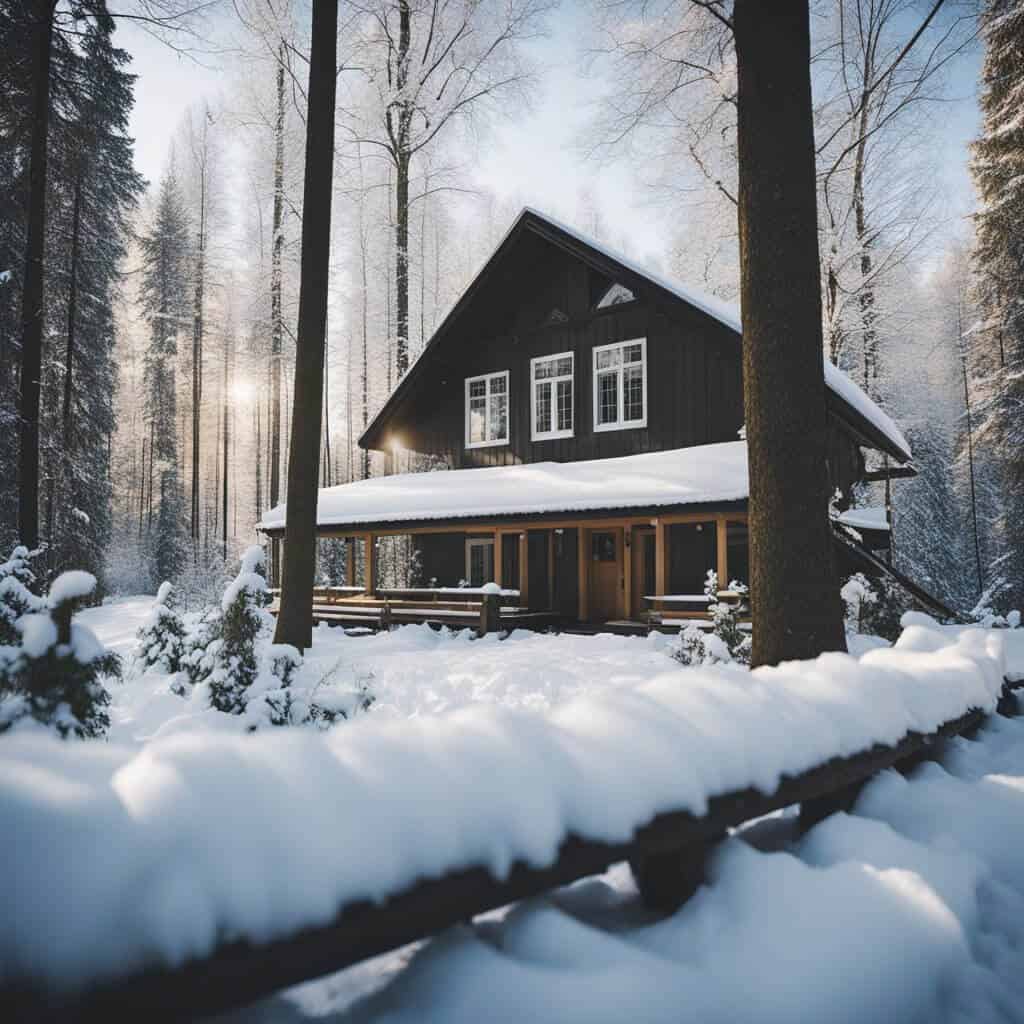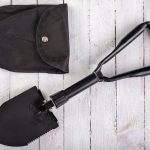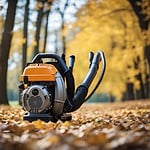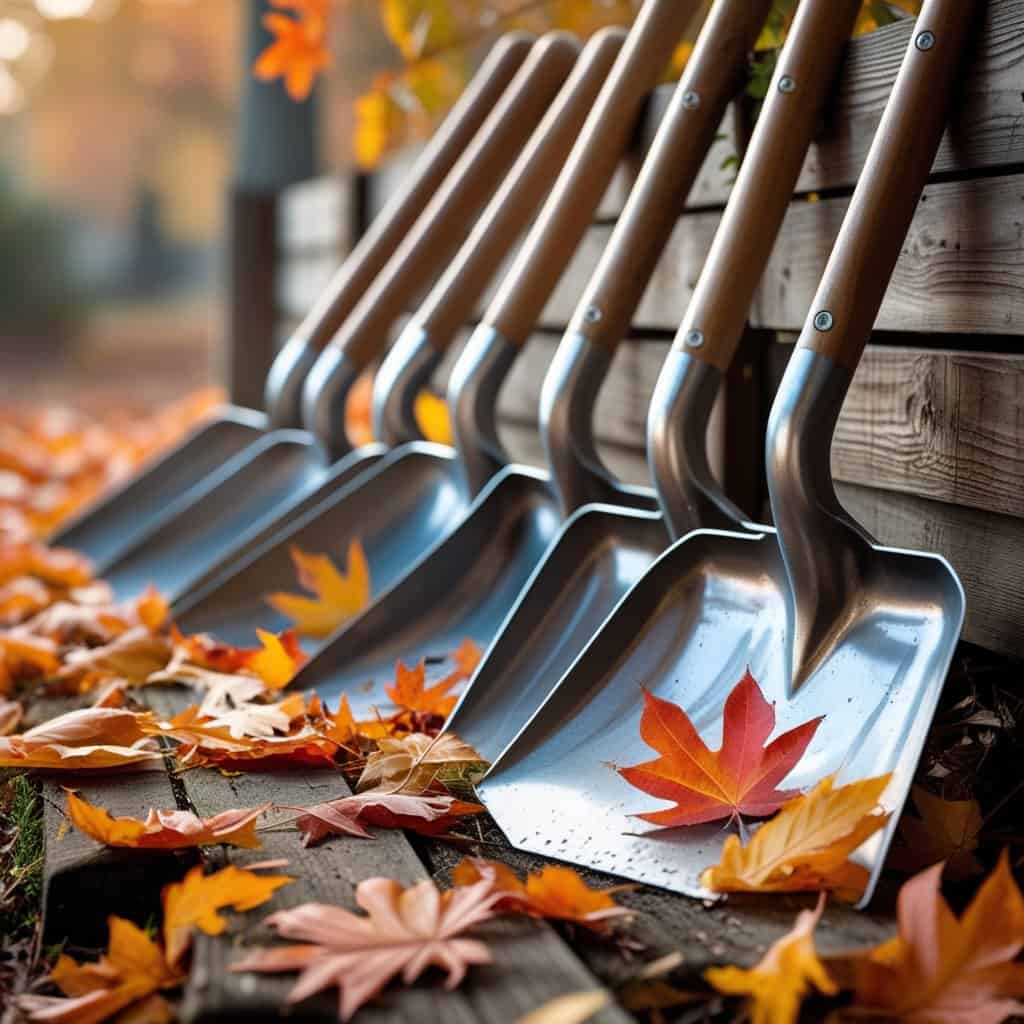As winter draws near, homeowners will have to tackle the task of removing snow from their driveways and walkways. Clearing packed snow can be daunting, especially after a heavy snowfall or when temperatures drop below freezing. To clear packed snow can be challenging, but it will create hazardous conditions for pedestrians and drivers. The process to clear packed snow can be made more manageable and efficient with appropriate tools and techniques.
Table of Contents
Clear Packed Snow Tool Choices
Whether dealing with heavy, wet snow or light and fluffy powder, having the right tool can save you time and effort.
Snow Shovel
A snow shovel with a sturdy handle and a wide blade is ideal for moving large amounts of snow. It’s also important to consider the weight of the shovel, as a heavy shovel can quickly become tiring to use.
There are several types of snow shovels, each with advantages and disadvantages. Here are some of the most common types:
- Traditional snow shovels are the most basic type of snow shovel, with a flat blade and a straight handle. They are lightweight and easy to maneuver but could be better for heavy snow or ice.
- Snow pushers: These shovels have a wide, curved blade that allows you to push the snow instead of lifting it. They are great for clearing large areas quickly but less effective for heavy, wet snow.
- Ergonomic snow shovels: These shovels have a curved handle that reduces strain on your back and shoulders. They are a good choice if you have a lot of snow to clear or back problems.
- These shovels have an adjustable blade, allowing for versatility in removing different types of snow.
One factor to consider when choosing a shovel for packed snow is the blade size and shape. A wider blade can help you clear more snow with each scoop, while a narrower blade is easier to maneuver in tight spaces. A curved blade can help you push snow more efficiently, while a straight blade is better for lifting and throwing snow. Whether dealing with heavy, wet snow or light and fluffy powder, having the right shovel can save you time and effort.
Snow Blowers
Snow blowers can be a good investment if you have a large area to clear or live in an area with heavy snowfall. However, the purchase and maintenance can be expensive. Here are some pros and cons of snow blowers versus shovels:
- These machines can clear large amounts of snow quickly and efficiently. They are also easier on your back than shovelling. They can be expensive, require maintenance, and may not be practical for smaller areas.
- Shoveling snow is a good workout with basic equipment. It is also a good option for smaller areas or if you want to avoid investing in a snow blower. However, it can be hard on your back and shoulders and may not be practical for heavy snow.
Snow Plow
Different snow plows are available on the market, including straight blades, V-plows, and wing plows.
- Able to clear large areas quickly and efficiently, and is versatile in handling different types of snow.
- Has the ability to push snow to designated areas.
- Plows are expensive to purchase and maintain as you need a vehicle to attach the plow to. There is potential damage to the vehicle, plow or surface being cleared if not used properly.
- Snow plows may only be suitable for open areas, not tight or narrow spaces.
Shovel Techniques To Clear Packed Snow
When clearing packed snow, using a snow shovel is one of the most common and effective methods. Select a shovel with a sturdy handle and a wide blade to start. The shovel will allow you to lift and push the snow with minimal effort.
Start at the edge of the area you want to clear and work inward. Use the shovel to push the snow to one side, then lift and toss it away from the area you are clearing. Take small bites through the packed snow, as the weight of packed snow is heavier than you think. Use your legs and not your back when lifting the snow, as this can help prevent injury.
If you encounter any ice while shovelling, I recommend using a metal or plastic ice chopper to break it up before shovelling it away.
A trick I learned for ice was to utilize a garden fork. Run the garden fork along the ground and under the ice or snowpack, and it will break up. I find the fork method one of many great snow removal hacks and it is easier on my back and arms compared to using an ice chopper. Then, use the shovel to scoop away the mound you were able to break up.
Snow Blower Techniques To Clear Packed Snow
A snow blower can be valuable for larger areas or heavier snowfall. When using a snow blower, I recommend starting at the edge of the area you want to clear and working your way inward. Use the blower to push the snow to one side, then repeat the process in the opposite direction.
Blown snow packs when blown, so if you cannot disperse the snow on either side of the area you are clearing, I recommend clearing backwards, depending on the depth of the snow to be removed. Let me clarify: my driveway has my home on one side and a fence on the other, so I can only blow the snow down the driveway forward. As I blow the snow forward, it piles and packs down on the snow further up the driveway. My solution to this is to blow the snow backwards. I first clear the farthest part of the driveway to eliminate snow buildup. Then, I go to the beginning of my drive and blow it out to the cleared area. Finally, I use a shovel to remove the snow once again from the farthest part of the driveway.
Be sure to adjust the height of the blower to match the depth of the snow, and avoid pushing the snow too far or too close to buildings or other obstacles. Additionally, be aware of any ice or hard packed snow, as this can damage the blower.
Plow Techniques To Clear Packed Snow
Clearing packed snow with a plow can effectively remove snow from your driveway, sidewalk, parking lot, or other areas. Following these steps, you can effectively clear packed snow with a plow and keep your property safe and accessible during winter.
Before clearing the snow, ensure the plow is in good condition and properly attached to your vehicle. Check the hydraulic system, the blade angle, and the blade height to ensure they are working correctly.
Once you are confident all is working well, adjust the blade angle to the direction you want to push the snow, as this will help you move the snow more efficiently and prevent the plow from getting stuck.
Begin plowing at the snow’s edge and work toward the center. Use a slow and steady pace to prevent the plow from getting stuck or causing damage to the surface underneath. As you plow, stack the snow in a designated area, such as the side of the driveway or parking lot, to prevent the snow from getting in the way of your plowing and provide a clear area for vehicles to pass. Once you have finished plowing, use a shovel or snow blower to clean up any remaining snow or debris to ensure the site is safe and free of hazards.
Alternative Methods To Clear Packed Snow
If you don’t have access to a snow shovel or blower, you can still use other methods to clear packed snow. One option is to use a broom or brush to sweep away the snow, although this may be less effective for heavier snowfall.
In addition to a snow shovel or blower, some additional tools can make the job easier.
Ice Chopper Or Scraper
Ice chopper or scraper: An ice scraper can help remove ice from your car windshield or other surfaces, and an ice chopper can help to remove or loosen ice and packed snow.
Ice Melt and Rock Salt
One of the most common methods for melting ice and snow is ice melt or rock salt. These products work by lowering the freezing point of water, causing the snow or ice to melt. Apply the product sparingly, as using too much can damage your lawn and harm pets or other vegetation. Make sure to read the instructions carefully. Some products can damage concrete or other surfaces. Sprinkle the salt or sand over the snow/ice and wait for it to melt, then use a shovel or broom to clear away the remaining slush.
Hot Water and Towels
If you do not have any ice melt or rock salt on hand, you can use hot water and towels to melt the snow and ice. Here’s how:
- Boil a pot of water.
- Pour the hot water over the snow and ice.
- Use a towel to soak the water and remove the snow and ice.
This method can be effective but also be time consuming and labor intensive. It’s also not recommended for large areas.
3rd Party Service
Lastly, you can hire someone to clear everything for you. On the harsh snow days, I utilize MowSnow Pros but have also used individuals who own landscaping firms and individuals I found in a community bulletin. Check with family and friends, and you will uncover someone available to assist you; maybe even your neighbour’s teenagers might enjoy making a little money.
Tool Maintenance & Storage Tips For Tools To Clear Packed Snow
When clearing packed snow with a shovel, it’s essential to maintain and store your tools properly. After each use, I recommend cleaning your shovel with water to remove dirt or debris. Be sure to dry it off thoroughly to prevent rusting on metal components. If you notice any rust or damage, use sandpaper to smooth out the surface and prevent further damage. When storing your shovel, ensure it is in a dry, cool place to stop rusting. You can hang it on a wall or store it in a bucket to keep it vertical to prevent bending or breaking. It’s essential to keep your shovel in good condition so it will be ready to use the next time you need it.
If you prefer to use a snow blower after each use, I recommend cleaning the chute and the bucket with a shop vac to remove any snow or debris. Check the oil and gas levels, refill them if needed, check the spark plug, and replace it if it looks worn or damaged. Cover your snow blower with a vehicle blanket or tarp to protect it from the elements and potential rust if stored outside or in an unheated building.
If you use a plow to clear packed snow, clean the plow thoroughly to remove any snow, ice, or debris. Use a hose or pressure washer to remove any buildup, and dry the plow with a towel or air compressor.
Check the plow for any signs of damage, such as cracks, bent blades, or loose bolts. Lubricate moving parts, such as hinges, pins, and cylinders, to prevent rust and ensure they operate smoothly. Repair any damage to avoid further damage and ensure it is ready for use next time by storing it in a dry, protected area, such as a garage or shed. Cover your plow to protect it from dust, dirt, moisture and potential rust.
Final Thoughts
Clearing packed snow is a strenuous task that requires proper technique and precautions. Overall, there are several effective techniques for clearing packed snow. Whether you use a shovel, blower, plow or alternative method, take your time and work safely to avoid injury.
Frequently Asked Questions
How do you safely shovel heavy, wet snow?
When shovelling heavy, wet snow, take breaks. Try to push the snow off the area you are cleaning instead of lifting it. Use a smaller shovel to avoid lifting too much weight at once, and take smaller scoops to avoid straining your muscles.
Is it safe to shovel snow while it’s still snowing?
Shovelling snow while still snowing is generally safe, but it’s essential to be cautious and take breaks as needed. Do warm up stretches before picking up your shovel, wear warm clothing, stay hydrated, and avoid shovelling if you have any health conditions that could be affected by physical activity.
Should you remove a dusting of snow from your driveway?
Removing a dusting of snow from your driveway is not always necessary, but it prevents ice from forming when the weather warms up throughout the day and makes it easier to shovel later on.






